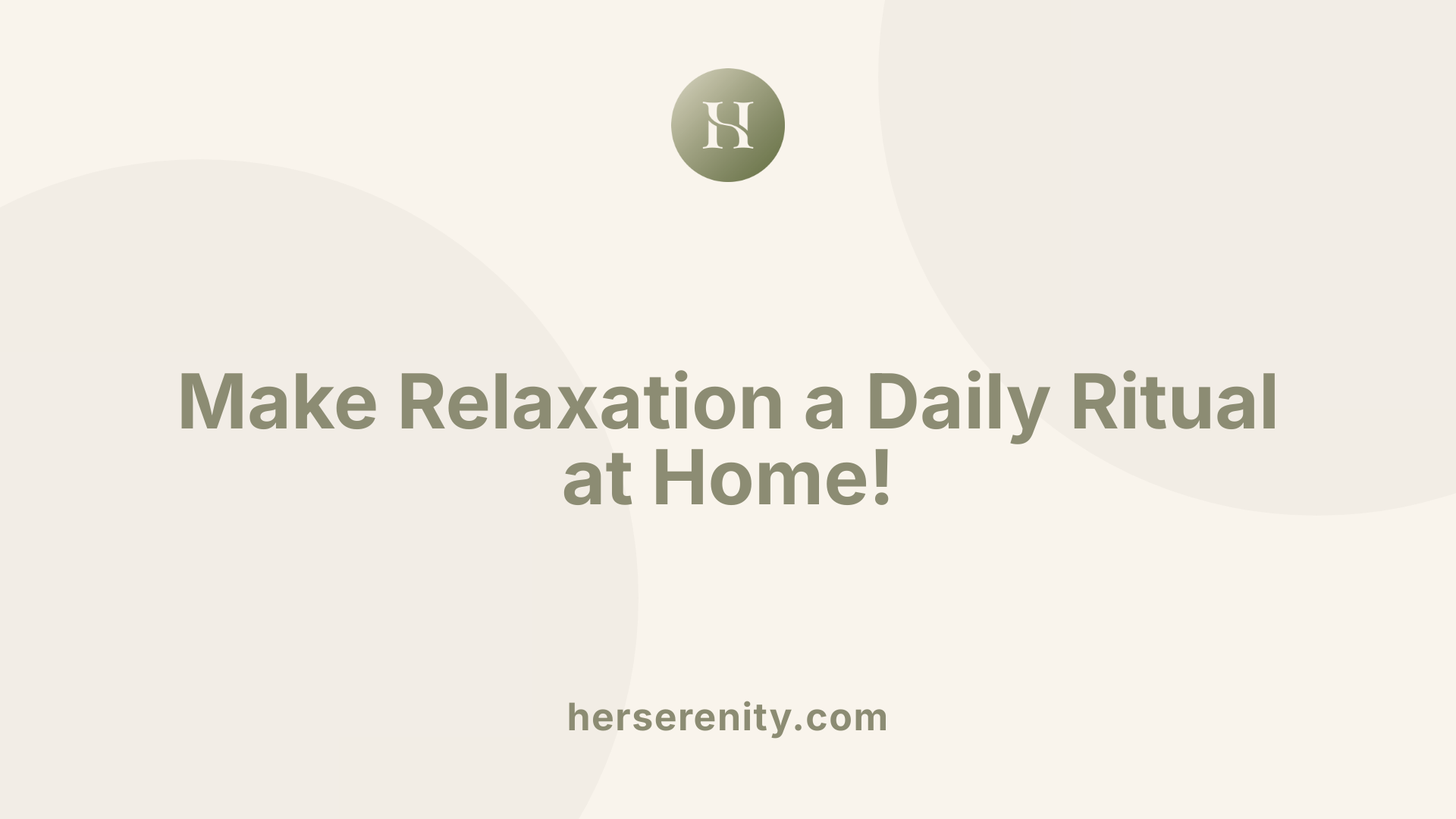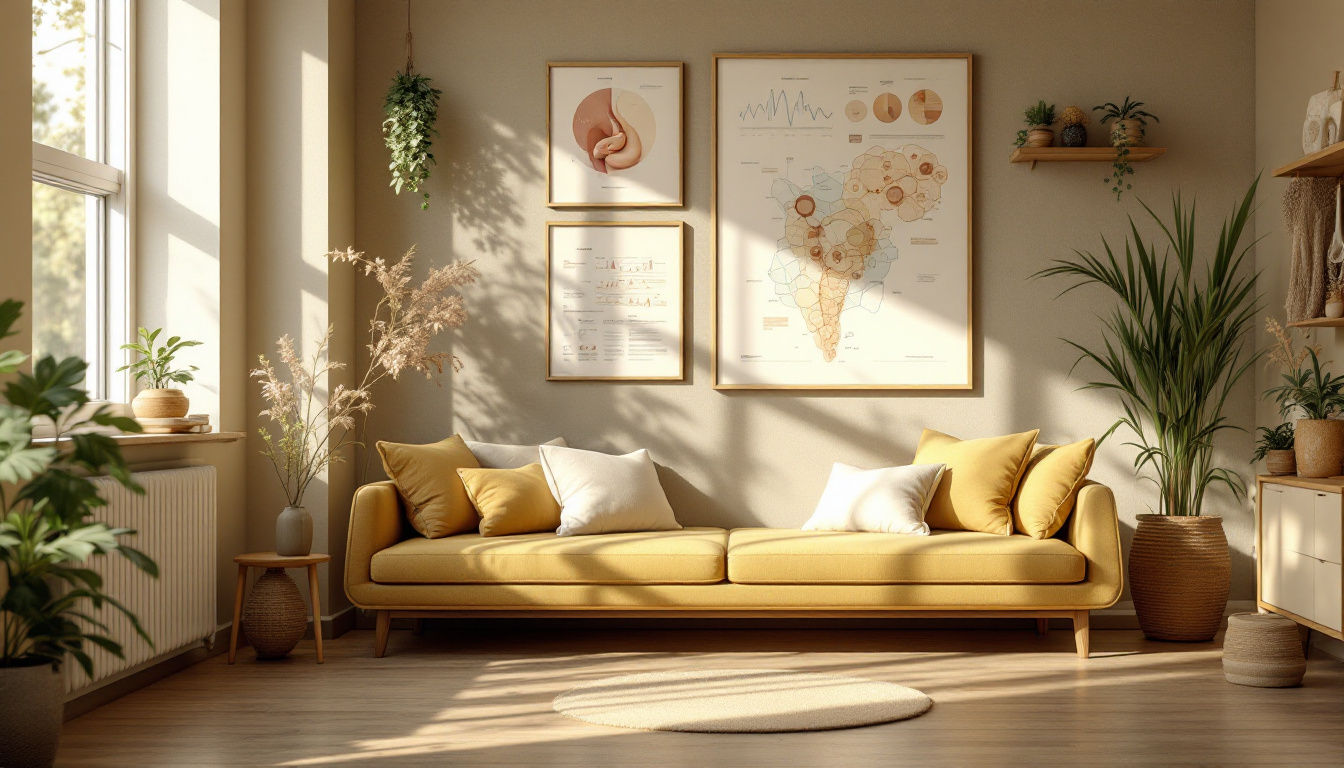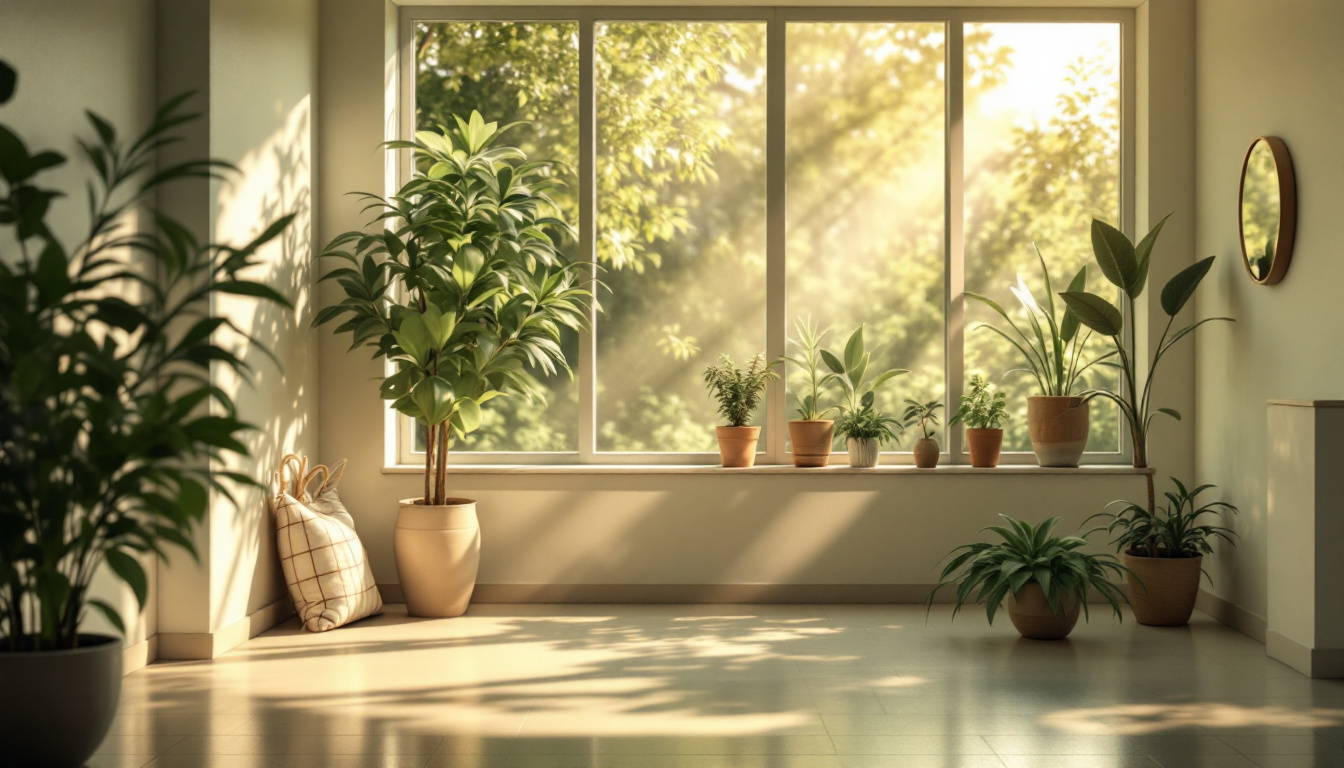How to Incorporate Relaxation Techniques Into Your Daily Routine
Embrace Calm: Integrating Relaxation into Your Life

Introduction
In a fast-paced world, taking time to relax might seem like a luxury, but it's essential for maintaining mental and physical well-being. Integrating relaxation techniques into one's daily routine can greatly aid in stress management, providing numerous health benefits. This article explores various relaxation methods, their benefits, and practical ways to incorporate them into your everyday life.
Discover Effective Relaxation Techniques

What are some effective relaxation techniques for stress management?
Managing stress effectively can be achieved through various relaxation techniques. Here are some of the most impactful methods:
Deep Breathing: This technique involves inhaling deeply through the nose, holding for a brief moment, and exhaling slowly through the mouth. It's found to significantly calm the nervous system and quickly alleviate stress. A suggested rhythm is inhaling for four counts, holding for four, and exhaling for six or eight counts.
Meditation: Practicing meditation focuses one’s awareness and fosters a sense of calm. Mindfulness meditation, in particular, encourages individuals to stay present, attentively observing thoughts without judgment. This practice can lead to lasting benefits for managing anxiety and stress levels.
Progressive Muscle Relaxation: PMR involves tensing and then relaxing muscle groups sequentially. This method not only enhances awareness of muscle tension but also promotes a profound sense of relaxation throughout the body.
Visualization: Engaging in visualization techniques involves imagining peaceful scenes or scenarios. This mental escapism can effectively disengage individuals from anxiety and promote relaxation by fully engaging the senses in serene imagery.
Yoga: Combining physical postures with mindfulness and breath control, yoga is highly praised for reducing stress and improving emotional well-being. Gentle yoga can be particularly soothing by enhancing flexibility and focus.
Tai Chi: This mindful practice combines slow, deliberate movements with deep breathing. It is known to promote relaxation and lower stress levels, making it an excellent option for those looking for a holistic approach to wellness.
Regular practice of these techniques is key to their effectiveness. By incorporating them into daily routines, individuals can improve their overall well-being, lower cortisol levels, and enhance focus and mood.
Elicit the Relaxation Response

What are some specific relaxation techniques to elicit a relaxation response?
Relaxation techniques are essential tools for managing stress and promoting overall well-being. Here are several effective methods that can help elicit a relaxation response:
Breath Focus
- This involves taking long, deep breaths to calm the mind and body. With breath focus, distractions are minimized, allowing you to center your thoughts and promote relaxation.
Guided Imagery
- This technique encourages the visualization of calming and serene scenes, engaging all five senses to foster a peaceful mental environment. While powerful, it may be challenging for individuals experiencing intrusive thoughts.
Mindfulness Meditation
- Mindfulness meditation promotes present-moment awareness by encouraging individuals to focus on their breath and acknowledge thoughts without judgment. This practice can significantly reduce anxiety and enhance emotional stability.
Physical Practices like Yoga
- Yoga intertwines breath and movement, fostering relaxation through various poses and deep breathing exercises. It effectively lowers cortisol levels, enhances mood, and aids in alleviating stress.
Incorporating these techniques into your daily routine can greatly improve your ability to manage stress and foster an inner sense of calm.
Integrate Relaxation at Home: A Daily Ritual

How can you incorporate relaxation techniques into your daily routine at home?
Incorporating relaxation techniques into your daily routine at home is more achievable than it seems. Start your morning with mindfulness practices. Simple activities like stretching, deep breathing, and setting intentions help cultivate focus and reduce stress right from the start. Following these practices with a nutritious breakfast, such as avocado toast or overnight oats, can increase mood and energy levels.
Regular physical activity also plays a crucial role in your daily routine. Activities like squats, pushups, or even a brisk walk can elevate your spirits and contribute to overall health. Adequate hydration throughout the day is vital as well—drinking enough water keeps your energy levels high and performance sharp.
Furthermore, taking scheduled breaks is essential. Carve out a few moments to engage in deep breathing exercises or mindful meditation. Cultivating a gratitude habit by jotting down things you appreciate can also enhance your overall mindset.
Additional Tips for Daily Routine
Here’s a quick table to summarize these daily practices:
| Practice | Benefits | Suggestions |
|---|---|---|
| Morning Mindfulness | Reduces stress, enhances focus | Stretching and deep breathing |
| Physical Activity | Boosts mood, contributes to health | Squats, pushups, walking |
| Scheduled Breaks | Improves mental clarity, reinforces relaxation | Breathing exercises, meditation |
By implementing these techniques consistently, you can significantly improve your home relaxation practices and overall well-being.
The Benefits of Relaxation Techniques

How do relaxation techniques benefit mental and physical well-being?
Relaxation techniques are essential tools that promote both mental and physical well-being. By actively engaging in these practices, individuals can significantly reduce stress and cultivate a profound sense of calm.
One of the most noticeable effects of relaxation techniques, such as deep breathing and guided imagery, is their ability to lower blood pressure. This reduction is beneficial for cardiovascular health, potentially preventing heart-related issues. Regular engagement in relaxation exercises can ease muscle tension and enhance blood circulation, further contributing to improved physical health.
In addition to physical benefits, these methods also promote mental clarity. Practicing techniques like mindfulness or progressive muscle relaxation helps individuals sharpen their focus and improve emotional stability. This is particularly impactful for those experiencing anxiety or depression, as it aids in minimizing negative thoughts and facilitating a more positive outlook.
Sleep quality also greatly benefits from the integration of relaxation practices. Techniques such as yoga, meditation, and visualization can prepare the body for a restful night, leading to enhanced sleep patterns. Improved sleep not only boosts energy levels during the day but also contributes to better overall comfort, especially for individuals managing chronic conditions like pain or gastrointestinal disorders.
In summary, regular engagement in relaxation techniques can foster better coping mechanisms, leading to enhanced health outcomes and quality of life.
Practical Tips for a Relaxation Routine

What practical tips can help integrate relaxation practices into everyday life?
To effectively integrate relaxation practices into your daily routine, consider these concise yet impactful strategies:
Short Activities: Set aside a few minutes each day for quick relaxation exercises. Start with deep breathing, focusing on your breath's rhythm, or practice mindfulness meditation to center your mind.
Engaging in Exercises: Incorporate gentle exercises like yoga or tai chi. These practices not only enhance physical flexibility but also cultivate inner calm through rhythmic movements and deep breathing.
Creative Pursuits: Make time for activities that stimulate creativity, such as drawing, painting, or playing a musical instrument. Engaging in creative endeavors provides a joyful outlet for stress relief and emotional expression.
Additionally, prioritize screen breaks and consider spending time outside to reconnect with nature. These moments can significantly enhance your mental well-being while addressing stress.
By following these tips, you can seamlessly weave relaxation techniques into your life, leading to a more balanced and calm existence.
Mindfulness: The Heart of Relaxation
What are mindfulness exercises?
Mindfulness exercises involve focusing attention on the present moment, acknowledging thoughts and feelings without judgment. Techniques include:
- Breath focus: Concentrating on breathing deeply and steadily, which calms the nervous system.
- Body scan meditation: Bringing awareness to different body parts to promote relaxation and increase bodily awareness.
- 5-4-3-2-1 grounding technique: Using senses to identify five things you can see, four you can touch, three sounds you can hear, two smells, and one taste helps redirect your focus from anxiety.
What benefits does mindfulness provide?
Practicing mindfulness reduces stress and anxiety, enhances emotional stability, and improves focus. It can also facilitate better sleep quality and contribute to overall mental well-being.
How can mindfulness be practiced daily?
To incorporate mindfulness:
- Set a schedule: Dedicate specific times each day for exercises like breath focus or body scans.
- Ease into it: Begin with just a few minutes of practice, gradually increasing the duration.
- Stay consistent: Regular practice helps make mindfulness a habit, improving resilience and emotional health.
Engaging in these mindful practices can yield lasting benefits, making it a vital part of your relaxation routine.
Maintaining Consistency in Relaxation Practices
How to Adjust Your Routine for Relaxation
To foster a consistent relaxation practice, it's essential to make routine adjustments that prioritize relaxation. Start by identifying the times during your day that feel the most hectic. By recognizing peak stress times, you can strategically schedule short relaxation sessions.
Why Flexibility is Important in Your Schedule
Flexibility in your relaxation routine is key. Life can be unpredictable, and unexpected events may disrupt your planned relaxation times. When such changes occur, it's beneficial to have backup plans, like practicing a short breathing exercise or mindful moment, wherever you might be. This adaptability allows you to stay committed without adding stress when plans shift.
How Support Networks Enhance Relaxation Efforts
Engaging with support networks can also bolster relaxation practices. Sharing your relaxation goals with friends or family can provide much-needed encouragement. These connections not only foster accountability but can also create opportunities for shared relaxation activities, whether it's joining a yoga class together or simply taking walks in a park.
By combining effective scheduling with a supportive community and flexibility, maintaining a consistent practice of relaxation can lead to profound benefits for your mental and emotional well-being.
Conclusion
Incorporating relaxation techniques into your daily routine doesn't require a major lifestyle overhaul. By setting aside a few minutes each day for these practices, you can significantly improve your mental and physical health. Remember, the key to benefiting from relaxation techniques is consistency and patience. As you explore various methods, find what resonates with you and fit it into your routine. Over time, these habits will help create a more balanced, serene, and fulfilling life.
References
- Relaxation techniques: Try these steps to lower stress - Mayo Clinic
- Six relaxation techniques to reduce stress - Harvard Health
- Ways to Incorporate Self-Care into Your Daily Routine
- Relaxation Techniques for Stress Relief - HelpGuide.org
- Mindfulness exercises - Mayo Clinic
- 6 Ways to Kickstart your Daily Relaxation Routine - iHealthOX
- Quick stress-relief techniques for busy days | Kaiser Permanente
- Tips to Add Relaxation to Your Day
- How Incorporating Relaxation Techniques into Daily Life Can ...


































































































